QuestionI have two baby quaker parrots. One is fine, but the other one, which is a baby but a little older than the other was given to me by the pet shop owner as a "handicapped bird". she apparently has suffered several breaks in both her legs and they've healed incorrectly. She manages to sit on her butt and looks like she has splayed legs. I'm not sure of her age and wonder if there's a way I can tell by the feathers that are now coming out. Also, how do I begin to offer them food and what types in order to start weaning them? I'm afraid that the handicapped one won't be able to hold certain foods. Do you think that will affect her? Thanks for any info you can give me on all these Q's.
AnswerDear Elena,I will first say that birds are very adaptive and can overcome many physical difficulties.She may have to have some help from you with perches and modified, easy to get to foods such as smaller pellets or soft carrots or broccoli and sweet potatoes in a shallow bowl but he should be able to wean onto those foods quite easily. Splayed or broken leggs should be seen by a Veterinarian very early in life so any chance of correcting can be done before the problem heals incorrectly.I would get her to a vet right away and wean onto soft vegetables and good pellets.A little food in a very shallow dish close to her will let her experiment with the feel and tast of foods and much will be wasted at first. Replace it very frequently and offer fresh water.As she learns to eat on her own her feedings from you will become less and less.If she is losing feathers already I would not know what is causing that because I only know of weaned birds going through a molt.Quakers are not dimorfic and you can't tell sex or age by feathers. Unless these are her first feathers and that would mean she isn't ready to be weaned until they are well on the way to being fully feathered.Flat perches or low perches may help her feel secure in her cage or the use of rope perches as she learns to use her linbs as much as she can. You may be suprised at how she may adapt to her disability as she matures (with a little help from you).

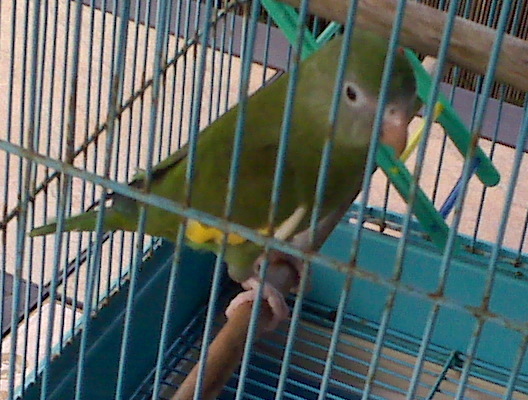 What type of parrot is this?
Question
Friendly bird
A week ago ths small parrot flew
What type of parrot is this?
Question
Friendly bird
A week ago ths small parrot flew
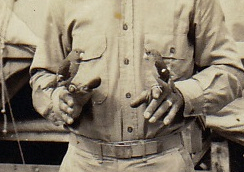 ID Birds
Question
Panama Birds
My uncle served in Panama in 1941
ID Birds
Question
Panama Birds
My uncle served in Panama in 1941
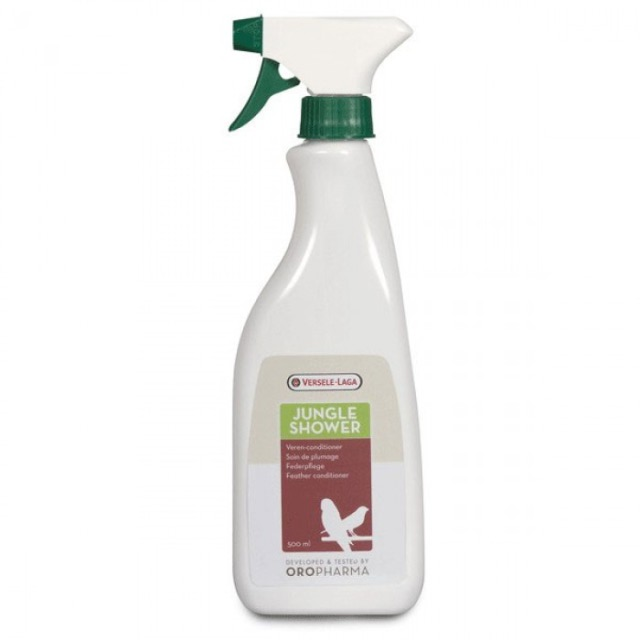 Indian Ringneck Health Issue
QuestionI have an Indian Ringneck who had been neglecte
Indian Ringneck Health Issue
QuestionI have an Indian Ringneck who had been neglecte
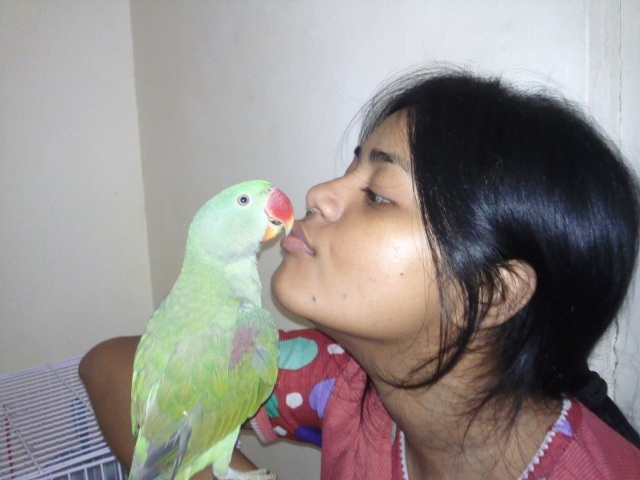 can i give my parrot chole(chana) called in hindi
Question
my little chaddi alexa
dear sir,
can give chan
can i give my parrot chole(chana) called in hindi
Question
my little chaddi alexa
dear sir,
can give chan
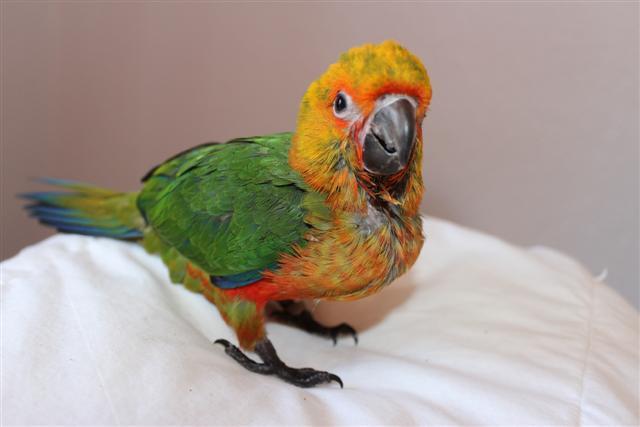 Jenday Conure Weaning?
Question
Castor the Conure
Hi
I have a 9 week o
Jenday Conure Weaning?
Question
Castor the Conure
Hi
I have a 9 week o